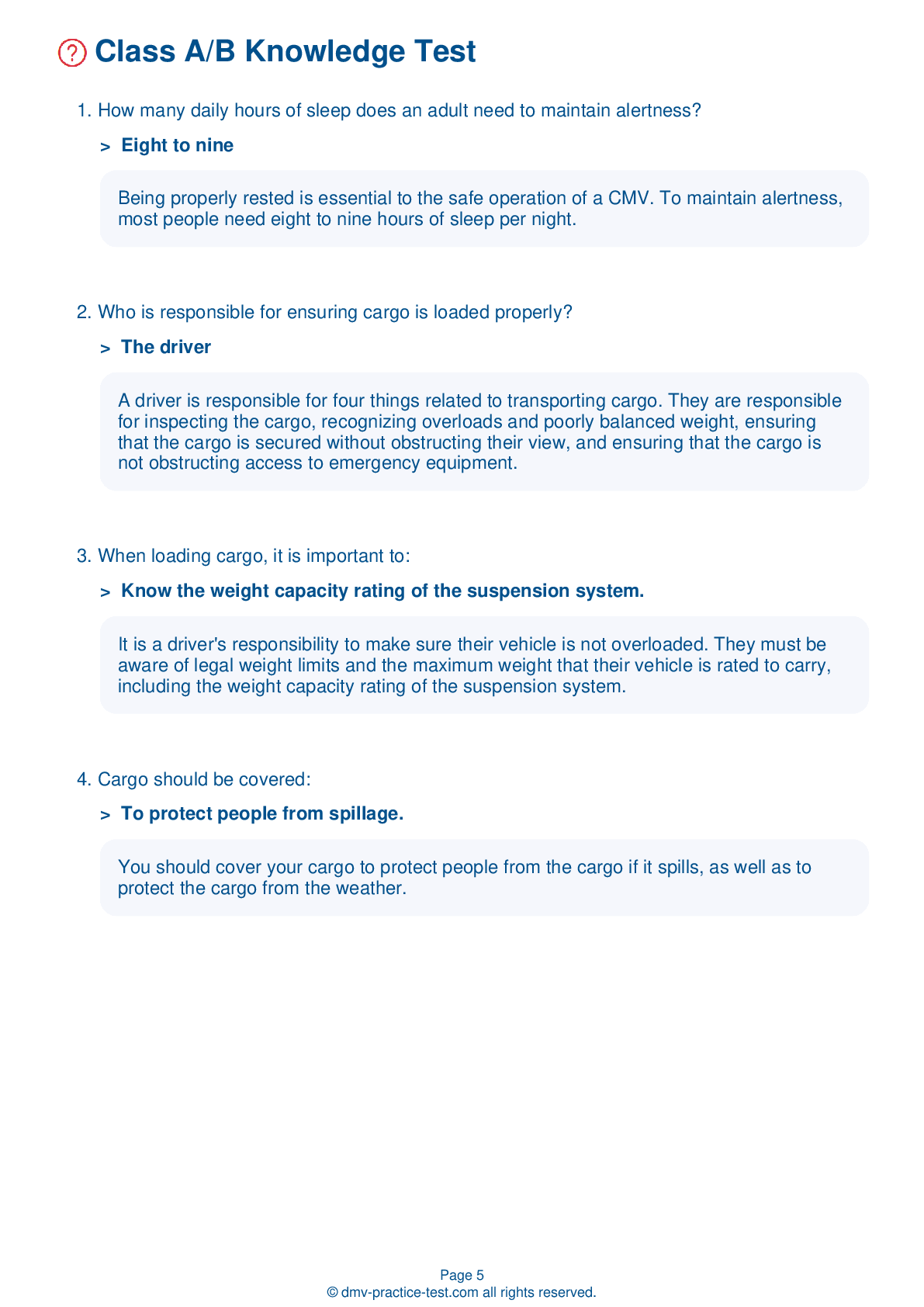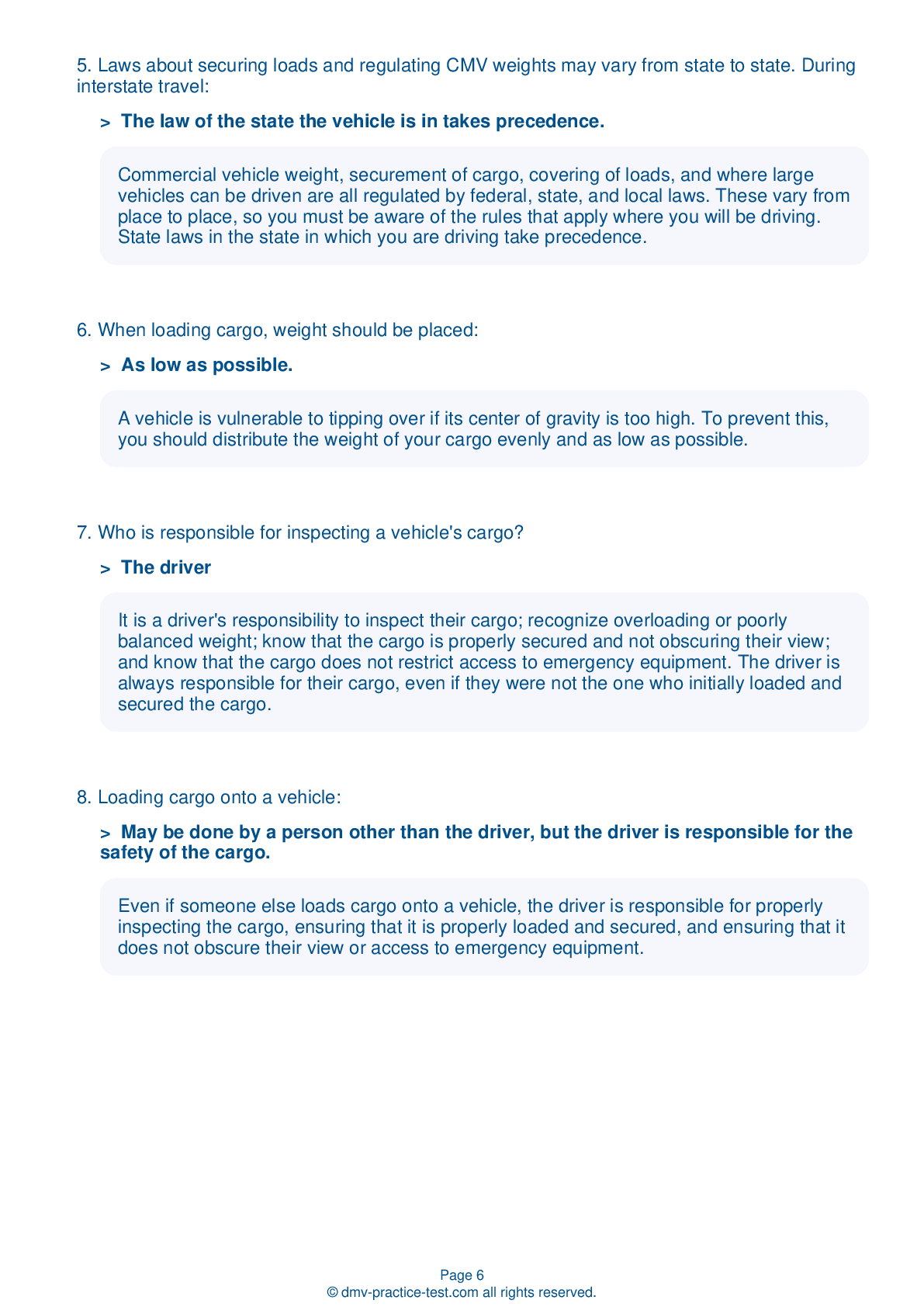Air Brakes #1
Air Brakes Endorsement Test | Connecticut 2025 #1 Page 4 of 4
Train for FREE online with our Connecticut CDL air brake test. The official exam test consists of several obligatory parts, with all of them checking your knowledge of different blocks of road rules. If you need to obtain a CT Class A/Class B driver license in 2025, practice as much as possible. Free sample tests published on our website will help you check and improve your knowledge and boost your grades. Please bear in mind that the requirements for CDL may vary from state to state.
25
20
20
19 . A low air pressure warning signal:
Any vehicle with air brakes must be equipped with a low air pressure warning signal.
20 . The air storage tanks:
Hold enough air for more than 1,000 braking cycles.
In an air brake system, the air storage tanks hold enough air for brakes to be used several times if the compressor stops working.
21 . Emergency brakes are:
Only required when transporting hazardous materials.
All trucks, truck tractors, and buses must be equipped with emergency brakes and parking brakes.
22 . Test the low pressure warning signal:
Before every trip.
It is essential that your low pressure warning light function properly. After allowing the system to charge, you can test the warning signal by rapidly applying and releasing the brake pedal. This will release air from the braking system and the warning signal should come on when pressure drops to a dangerous level.
23 . What helps prevent wheel lockup when braking?
The purpose of an Anti-Lock Braking System (ABS) is to prevent wheel lockup while brakes are being applied.
24 . A low air pressure warning signal should activate:
When tank pressure falls below 5 psi.
In an air brake system, a low air pressure warning signal must come on if air pressure in the tanks falls below 60 psi. This warning signal may come in the form of a light, a buzzer, or a wig wag.
25 . If the low pressure warning light comes on while you are driving:
You should stay at least 100 feet away from other vehicles.



